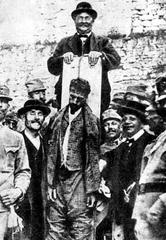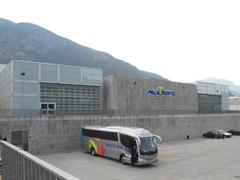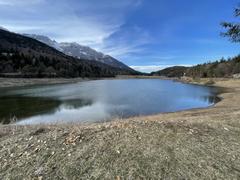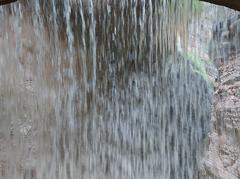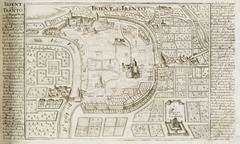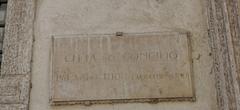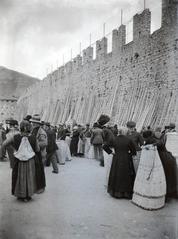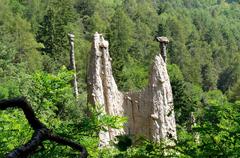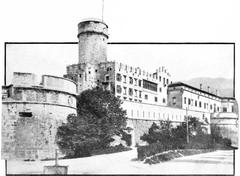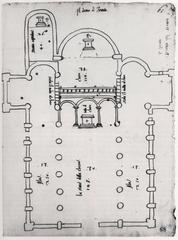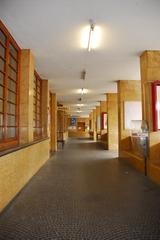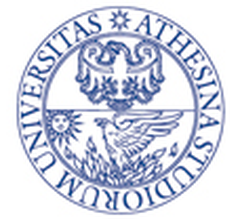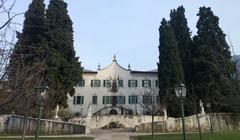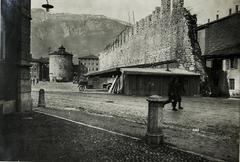Porta Santa Margherita, Trento, Italy: Visiting Hours, Tickets, and Travel Guide
Date: 14/06/2025
Introduction
Porta Santa Margherita stands as one of the most evocative medieval gateways in Trento, Italy, offering an exceptional perspective on the city’s layered history and urban evolution. Located in the vibrant Trentino-Alto Adige region, this historic gate is a rare surviving fragment of Trento’s once formidable medieval walls. Today, it serves not only as a monument to centuries of architectural ingenuity, but also as an accessible touchstone for visitors seeking to engage with Trento’s rich cultural heritage. This comprehensive guide covers everything you need to know about visiting Porta Santa Margherita: from historical context and architectural highlights to practical visitor information, travel tips, and nearby attractions.
Table of Contents
- Historical Background and Significance
- Visiting Porta Santa Margherita: Hours, Tickets, and Accessibility
- Nearby Attractions
- Frequently Asked Questions (FAQ)
- Visuals and Media Suggestions
- Conclusion and Visitor Recommendations
- Sources
Historical Background and Significance
Origins and Early Development
Porta Santa Margherita is among the last surviving gates from Trento’s medieval fortifications. The city’s defensive walls trace their roots back to Roman Tridentum in the late 1st century BCE, when the city was organized along a grid plan and fortified on three sides, with the Adige River forming a natural barrier. Over the centuries, these fortifications were expanded, most notably in the early 13th century under Prince-Bishop Federico Vanga, during the so-called “età vanghiana,” to accommodate an expanding urban population. Porta Santa Margherita was established as one of six main gateways in this new defensive circuit (cultura.trentino.it).
Architectural Features and Defensive Role
Constructed using the “tecnica a sacco”—a technique involving two parallel stone walls filled with earth and rubble—Trento’s medieval walls and gates were designed for both strength and durability. Porta Santa Margherita is distinguished by its Ghibelline swallowtail merlons and robust masonry, emblematic of northern Italian defensive architecture. Positioned on the western edge of the city, the gate served as a vital access point to the agricultural lands along the Adige River, reflecting the close relationship between urban life and the surrounding countryside (undertrenta.it).
Urban Evolution and Preservation
For nearly six centuries, the city’s walls and gates defined Trento’s boundaries. However, the 19th century saw the systematic demolition of most fortifications to allow for urban expansion and modernization. Today, only Porta Santa Margherita and Port’Aquila remain—the rest have vanished, their memory preserved in historical records and street names. The preservation of these gates is a testament to local commitment to maintaining Trento’s historical continuity (cultura.trentino.it, undertrenta.it).
Cultural and Symbolic Significance
Porta Santa Margherita is deeply intertwined with Trento’s collective memory and urban identity. Now almost absorbed by the surrounding buildings near the University of Trento’s Faculty of Letters and Philosophy, the gate remains a tangible link to the city’s medieval past. Its preservation, alongside the well-conserved “mura vanghiane” at Piazza Fiera, reflects a conscious effort to honor the city’s history amid ongoing change (undertrenta.it).
Visiting Porta Santa Margherita: Hours, Tickets, and Accessibility
Visiting Hours
Porta Santa Margherita is an open-air monument located within the city and is accessible to visitors year-round. There are no formal opening or closing hours; visitors can view the gate and the surrounding area freely during daylight hours, typically from 8:00 AM to sunset.
Tickets and Admission
No ticket or admission fee is required; the site is part of Trento’s public spaces. Visitors may explore the exterior and take photographs at their leisure.
Accessibility
The area around Porta Santa Margherita is pedestrian-friendly and can be reached easily from major transportation hubs, including Trento’s main railway station. While the gate itself is partially embedded in adjacent buildings and not fully accessible inside, the surrounding streets are wheelchair accessible. However, the medieval structure has uneven surfaces and may not be fully suitable for all mobility aids.
Guided Tours and Visitor Tips
Porta Santa Margherita is often included in guided walking tours of Trento’s historic center, which can be booked through the local tourist office or reputable tour operators. These tours provide deeper insight into Trento’s medieval heritage and urban evolution. The nearby university district offers several cafés and restaurants for rest and refreshment.
Nearby Attractions
Porta Santa Margherita’s central location makes it an ideal starting point for exploring Trento’s most notable sites:
- Church of Santa Maria Maggiore: An important religious and architectural landmark close to the gate.
- Piazza Fiera: Home to a preserved stretch of the medieval city walls.
- University of Trento: The city’s lively academic hub contributes to the dynamic atmosphere.
- Castello del Buonconsiglio: Trento’s most significant castle, featuring museums and historic frescoes.
- Piazza del Duomo: The city’s main square, surrounded by Renaissance buildings and lively cafés.
- MUSE – Museo delle Scienze: A modern science museum with interactive exhibits, a short walk from the city center.
Frequently Asked Questions (FAQ)
Q: Are there designated visiting hours for Porta Santa Margherita?
A: As an open-air monument, the gate is accessible daily during daylight hours.
Q: Is there an entrance fee?
A: No, visiting Porta Santa Margherita is free of charge.
Q: Is the site wheelchair accessible?
A: The area is generally accessible, though the gate itself has uneven medieval surfaces.
Q: Are guided tours available?
A: Yes, Porta Santa Margherita is included in many walking tours of Trento’s historic district.
Q: What is the best time to visit?
A: Spring and early autumn provide pleasant weather and fewer crowds, ideal for exploration and photography.
Visuals and Media Suggestions
- High-quality images of Porta Santa Margherita in morning and evening light (with alt tags such as “Porta Santa Margherita Trento at sunset”).
- Photos of nearby attractions: Castello del Buonconsiglio, Piazza del Duomo, and MUSE.
- An interactive map showing the gate’s location within Trento.
- Virtual tour links or short video walkthroughs to enhance the online visitor experience.
Conclusion and Visitor Recommendations
Porta Santa Margherita is a vital link between Trento’s medieval past and its modern urban identity. Its free, unrestricted access and proximity to other historical and cultural attractions make it an ideal destination for all visitors—whether you’re a history enthusiast, architecture lover, or casual traveler. To make the most of your visit:
- Plan to explore nearby sites such as Castello del Buonconsiglio and Piazza del Duomo.
- Consider joining a guided walking tour for in-depth historical context.
- Visit during spring or autumn for favorable weather and optimal photography.
- Take advantage of the Trentino Guest Card if staying locally, which provides free entry to top attractions and free public transport.
For ongoing updates, guided tour options, and detailed local information, consult the official Trento cultural websites and tourism portals, as well as mobile applications like Audiala (cultura.trentino.it, undertrenta.it, thecrazytourist.com, thecrowdedplanet.com).

